
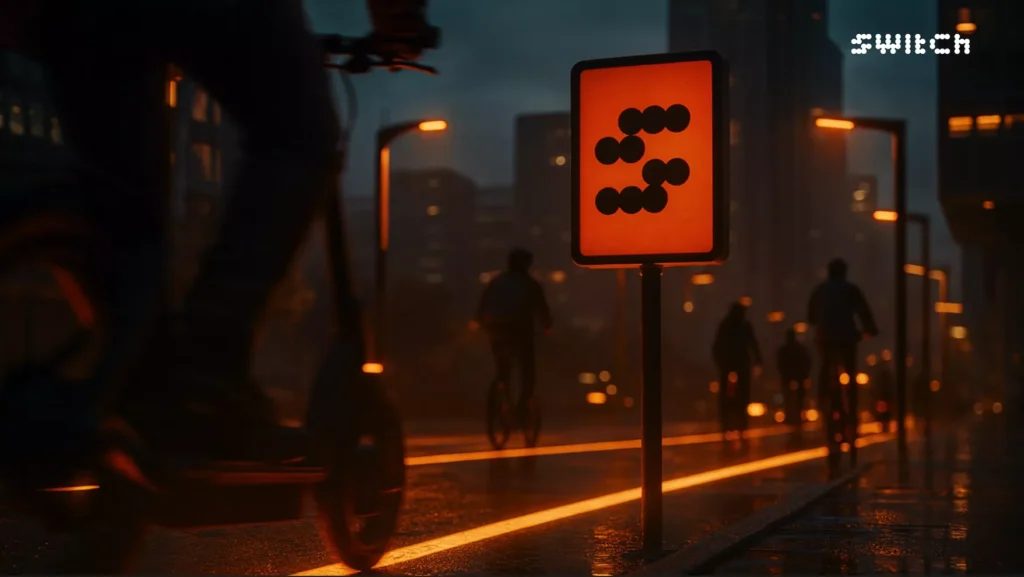

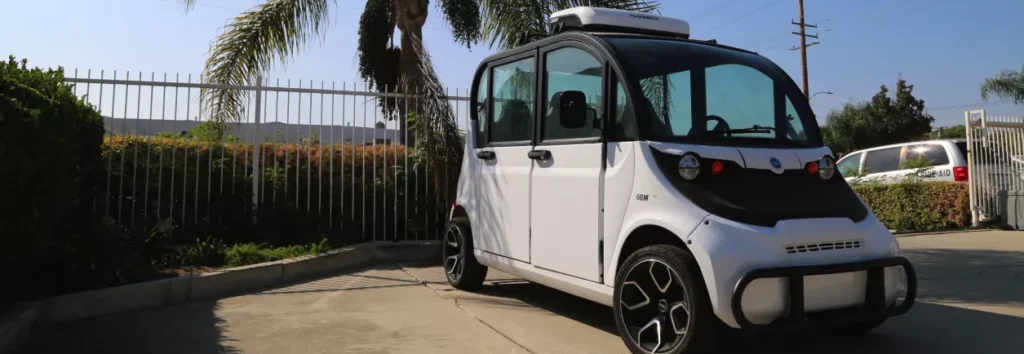
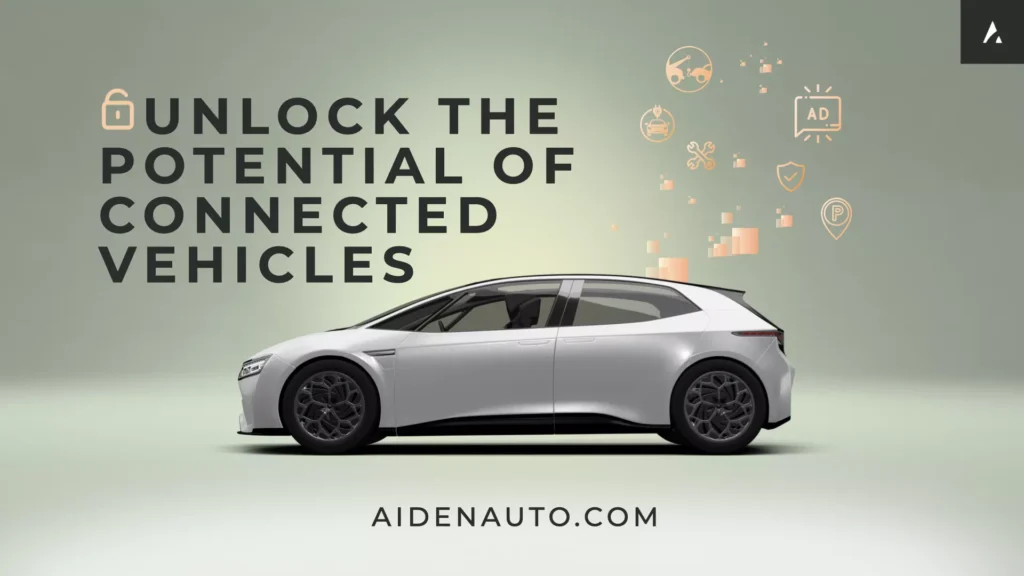





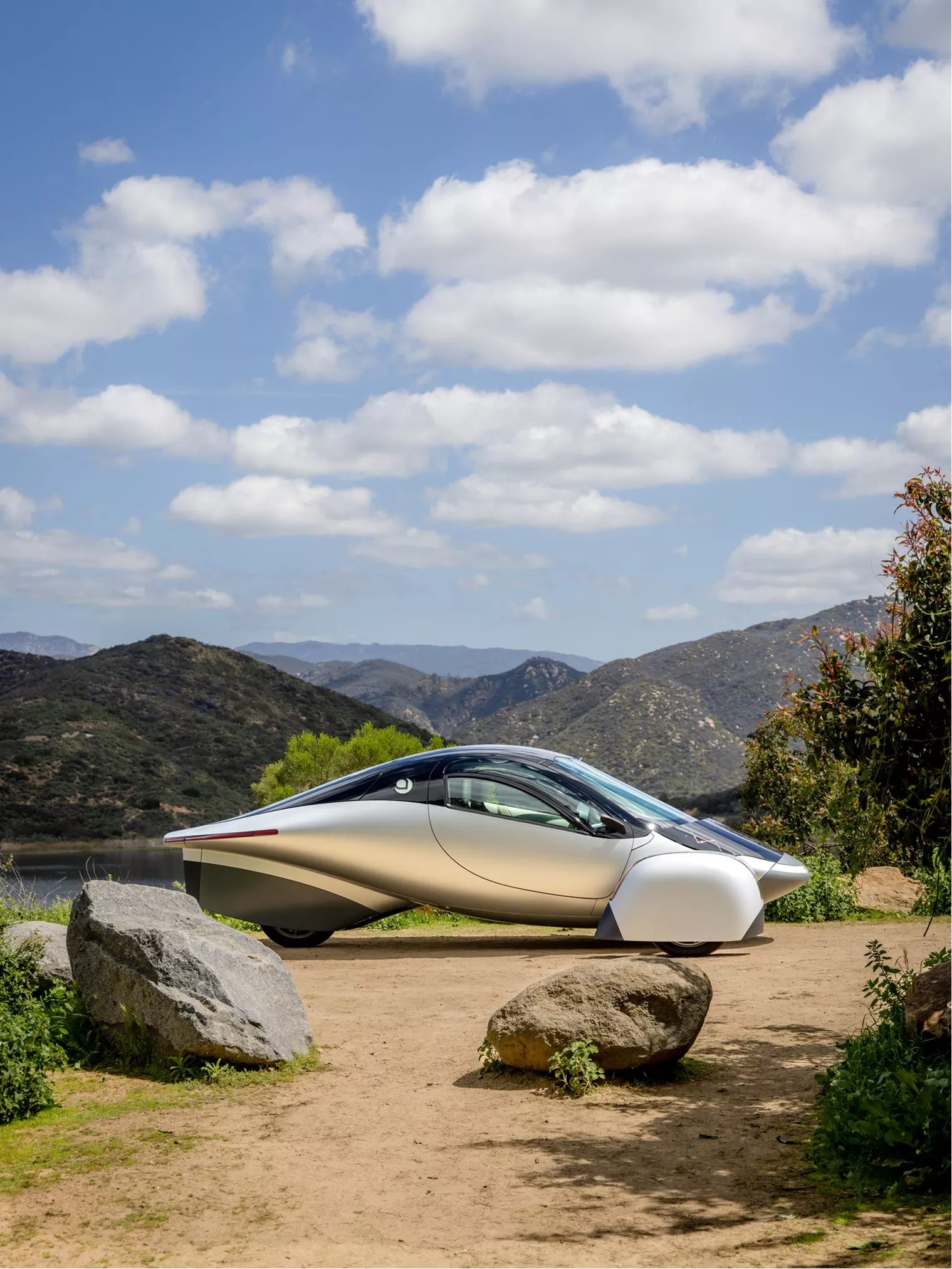
From EVs and batteries to autonomous vehicles and urban transport, we cover what actually matters. Delivered to your inbox weekly.
Ola has kicked off deliveries of its Roadster X electric motorcycle, starting May 23 in Bengaluru. This is Ola’s first move beyond scooters and into the full-size motorcycle segment.
The launch starts small. Bengaluru gets the first batch, with other cities to follow. Ola is using this phased rollout to test real-world performance and fix issues early—lessons it learned from its scooter debut.
It’s also a way to keep early buyers close. By focusing on one city first, Ola can track feedback, respond quickly, and smooth out the delivery experience before scaling up.
The Roadster X lineup is built around battery choice. Four variants offer different ranges and price points, giving riders flexibility based on their daily needs and budget.
The Roadster X comes in four battery sizes: 2.5, 3.5, 4.5, and 9.1 kWh. Prices start at ₹74,999 for the base model and go up to ₹1,54,999 for the top-end Roadster X+.
The X+ variant stands out for its claimed 501 km range, made possible by Ola’s own 4680-format “Bharat Cell.” It’s not shipping yet, but is expected to enter production later this year.
This pricing strategy positions Ola below most electric motorcycles in its class while offering a broader range of options tied to range and performance.
All Roadster X models use a modular battery system. This allows Ola to build different capacity variants on the same platform.
Charging takes between 4.6 and 6.2 hours to reach 80%, depending on battery size. There’s no DC fast-charging support, which limits turnaround speed but aligns with the bike’s commuter focus.
IP67-rated packs come standard, offering dust and water protection — an essential spec for Indian roads and weather.
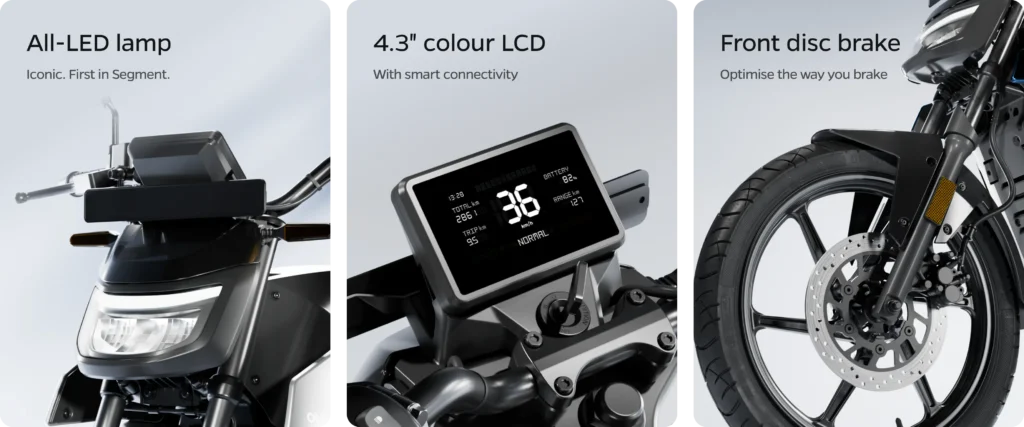
The Roadster X is built for daily riders who want quick performance, smart features, and a comfortable ride. From motor output to app integration, every part of the setup is tuned for urban use.
Performance Metrics
At the core of the Roadster X is a 7 kW mid-mounted motor, delivering up to 11 kW at peak. This setup pushes the bike to top speeds ranging from 105 km/h on the base model to 125 km/h on higher trims. On the X+ variant, 0 to 40 km/h comes in just 2.7 seconds—snappy enough for city traffic.
Power is managed through a chain drive and three ride modes—Eco, Normal, and Sport—calibrated by an onboard Motor Control Unit.
Every Roadster X runs Ola’s MoveOS 5 system. It powers a 4.3-inch LCD display with built-in turn-by-turn navigation, call and message alerts, and music controls via Bluetooth. Updates are handled over the air.
Safety is built in with geo-fencing, theft detection, and ride tracking via the Ola app. A single-channel ABS and brake-by-wire system round out the package. No extras needed to get started.
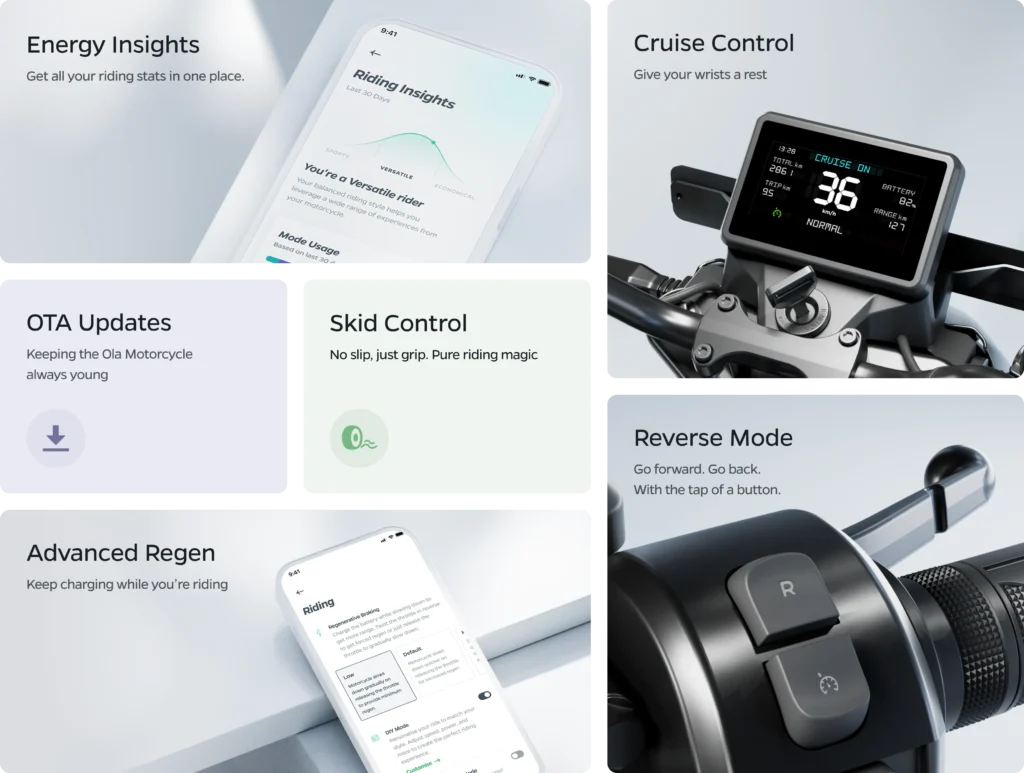
The bike rides on 17-inch alloy wheels, with telescopic forks up front and twin rear shocks tuned for daily urban use. The seat height is 777 mm, low enough for accessible handling.
At 127 kg (for the base model), the Roadster X stays light without sacrificing stability, offering a planted feel without becoming bulky in traffic.
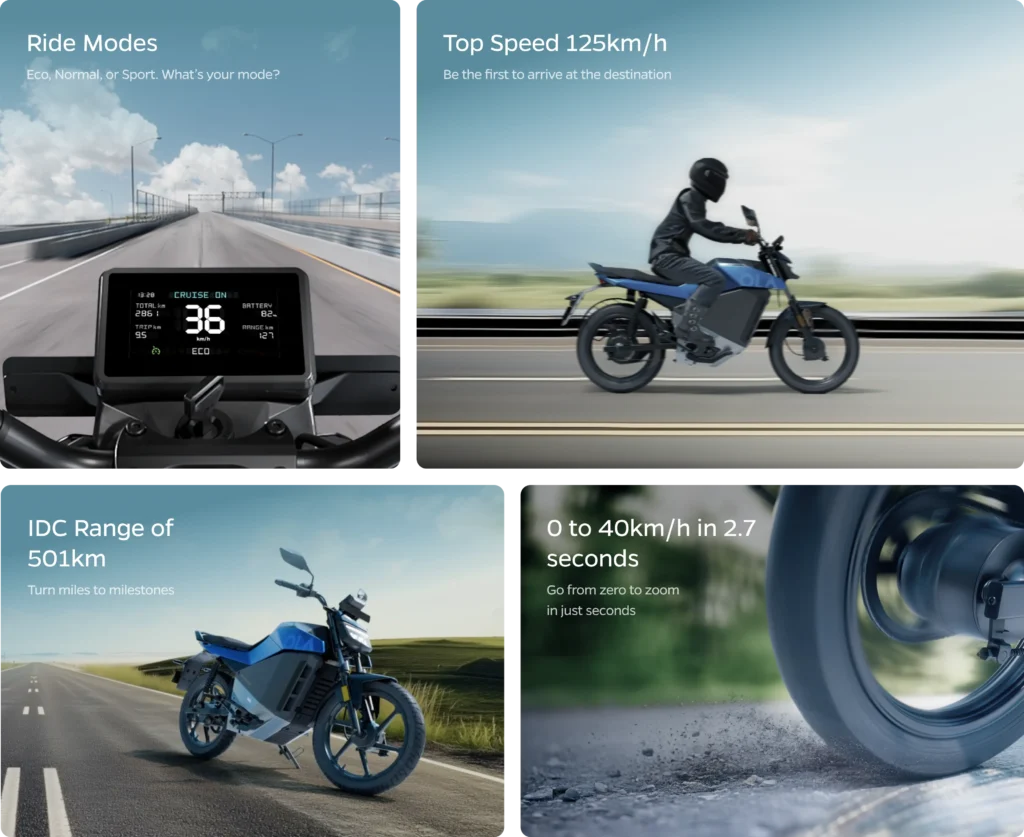
The Roadster X is a shift in Ola’s strategy. By entering the motorcycle segment, the company moves to tap a much larger market with a price-conscious, tech-focused approach.
Ola is aiming squarely at the commuter segment. The Roadster X undercuts key rivals like the Revolt RV400 and Oben Rorr on both price and range. Its real advantage lies in connectivity—MoveOS, GPS, and OTA updates—rather than high-end specs.
By keeping costs low and tech features high, Ola positions the Roadster X as a value-forward choice for city riders who want smart tools without a luxury price tag.
Until now, Ola has focused on scooters — a segment that leaves out a big chunk of India’s two-wheeler buyers. With motorcycles making up 30% of total sales, the Roadster X opens up a much larger customer base.
If executed well, this launch could double Ola’s potential market and build momentum heading into its expected IPO later this year.
The Roadster X rollout has already been delayed one month, reportedly due to dealership certification issues. For a company still repairing its reputation from earlier scooter quality complaints, any misstep now could carry more weight.
Service gaps, part shortages, and inconsistent post-sales support have all affected Ola’s past launches. The Roadster X will face scrutiny from early buyers, especially with expectations rising around premium variants.
The Roadster X+ introduces Ola’s in-house 4680-format “Bharat Cell” — a major step toward battery localization. But this is the first time the tech will scale in a production vehicle, and its readiness is still unclear.
Ola also remains exposed to global lithium pricing, which has hovered around $14,000/tonne. If raw material costs spike or domestic cell output stalls, the company’s pricing strategy could come under pressure.
The Roadster X is a critical test for Ola’s next chapter. Key signals to watch include battery degradation over time, delivery timelines for the high-capacity X+ variant, and the company’s ability to deliver consistent post-sales support.
With this launch, Ola moves beyond scooters to become a full-spectrum EV player. It now competes not just on price, but on platform, supply chain, and brand trust.
Execution, not just specs, will decide whether Ola can turn the Roadster X into a category-defining product or just another mid-market release.